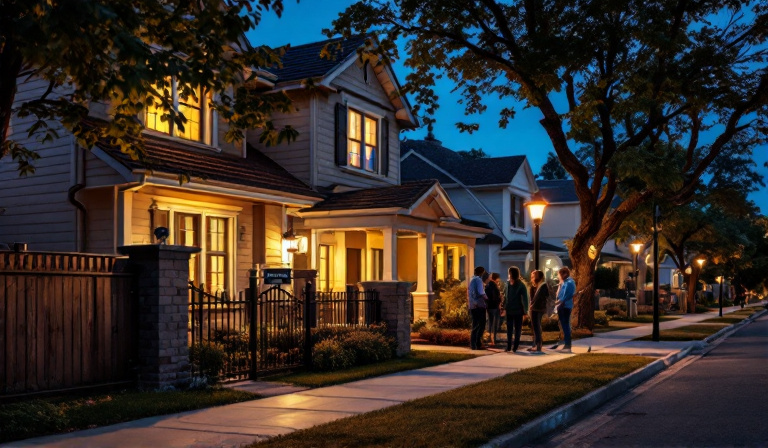
Vandalism can be a costly and frustrating issue for property owners. Whether it's graffiti, broken windows, or other forms of damage, vandalism can disrupt not only the aesthetics of a property but also its functionality and value. Fortunately, there are several practical measures that can be implemented to prevent vandalism and protect your property.
Understanding Vandalism
Before diving into prevention strategies, it's important to understand what vandalism entails. Vandalism is the intentional destruction or defacement of property. It can vary from minor acts, like egging a house, to more severe actions, such as arson. Understanding the motivations behind vandalism can help in devising effective prevention strategies. Often, acts of vandalism are carried out by individuals seeking attention, expressing frustration, or simply engaging in mischief.
Enhancing Property Visibility
One of the simplest yet most effective ways to deter vandals is by increasing the visibility of your property. Vandals are less likely to target areas that are well-lit and visible to the public or passersby. Here are some strategies to enhance visibility:
- Install Outdoor Lighting: Ensure all entry points, pathways, and vulnerable areas of your property are well-lit. Motion-activated lights can be particularly effective as they startle potential vandals and draw attention to their presence.
- Trim Landscaping: Overgrown bushes and trees can provide hiding spots for vandals. Regularly trim your landscaping to maintain clear sightlines and eliminate potential cover.
- Use Reflective Surfaces: Mirrors or reflective materials can be strategically placed to increase visibility and give the impression of surveillance.
Implementing Surveillance Systems
Surveillance cameras serve as a powerful deterrent against vandalism. The presence of cameras can discourage potential vandals who fear being caught. Consider the following when setting up surveillance systems:
- Choose High-Quality Cameras: Invest in cameras that provide clear, high-resolution footage to ensure that any incidents can be easily reviewed and used as evidence if needed.
- Position Cameras Wisely: Install cameras at key locations such as entrances, exits, and any other vulnerable spots on your property. Ensure they cover blind spots and have a clear view of high-risk areas.
- Use Signage: Clearly display signs indicating that the property is under surveillance. This can act as a psychological deterrent.
Establishing a Community Watch Program
Community involvement plays a crucial role in preventing vandalism. By fostering a sense of community and encouraging residents to look out for one another, the likelihood of vandalism can be significantly reduced. Here’s how to initiate a community watch program:
- Organize Meetings: Regular meetings can help residents discuss issues, share information, and devise collective strategies to prevent vandalism.
- Engage Local Authorities: Collaborate with local law enforcement to receive guidance, resources, and support for your community watch program.
- Promote Communication: Use social media platforms, group chats, or community boards to facilitate communication among residents and quickly spread information about suspicious activities.
Utilizing Anti-Vandalism Materials
Investing in materials that are resistant to vandalism can save you time and money in the long run. Consider these options:
- Anti-Graffiti Coatings: Apply coatings to walls and surfaces that make it easier to clean graffiti without leaving permanent marks.
- Shatterproof Glass: Use reinforced or shatterproof glass for windows to prevent breakage and make it more challenging for vandals to cause damage.
- Secure Fencing: Install robust, difficult-to-climb fencing around the perimeter of your property to deter unauthorized access.
Promoting Property Engagement
A property that appears well-cared for is less likely to be targeted by vandals. Engage with your property regularly by:
- Regular Maintenance: Keep the property clean and in good repair. Remove graffiti promptly and repair damaged fixtures to send a message that the property is actively managed.
- Creative Use of Space: Use public art, community gardens, or other creative installations to engage the community and promote a sense of pride and ownership in the property.
- Host Community Events: Organize or allow community events on the property to increase its usage and presence, which can deter vandalism through increased foot traffic and activity.
Educating the Community
Education is a powerful tool in preventing vandalism. By raising awareness about the impacts of vandalism, communities can discourage such behavior. Consider these educational measures:
- School Programs: Work with local schools to create programs that educate young people about the consequences of vandalism and the importance of respecting property.
- Community Workshops: Host workshops or seminars that inform residents about prevention strategies and encourage active participation in community safety.
- Public Awareness Campaigns: Use flyers, social media, and other platforms to spread messages about the negative impacts of vandalism and promote community pride.
Conclusion
Preventing vandalism requires a proactive approach that combines visibility enhancements, surveillance, community involvement, material investments, regular maintenance, and education. By implementing these practical measures, property owners can significantly reduce the risk of vandalism and create a safer, more secure environment. Remember, the key to success is a consistent and collaborative effort from all stakeholders involved in maintaining and protecting the property.

